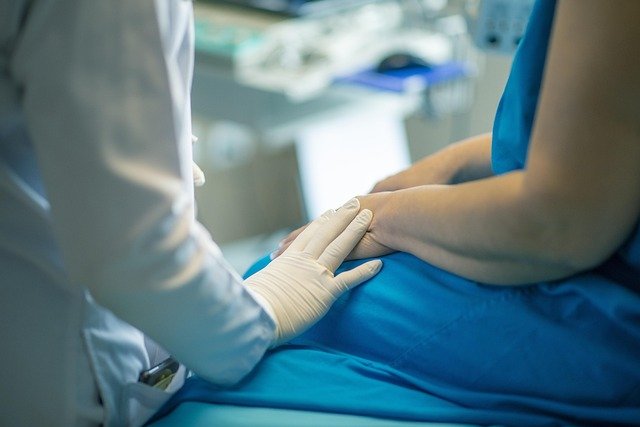Cryolipolysis: The Science of Fat Freezing
In the ever-evolving landscape of body contouring and fat reduction, cryolipolysis has emerged as a groundbreaking non-invasive technique that promises to reshape our approach to stubborn fat deposits. This innovative procedure, often referred to as "fat freezing," harnesses the power of cold temperatures to target and eliminate unwanted fat cells without surgery. As the beauty and fitness industry continues to seek alternatives to traditional liposuction, cryolipolysis has captured the attention of both consumers and medical professionals alike. Its ability to selectively destroy fat cells while leaving surrounding tissues unharmed has revolutionized the field of body sculpting, offering a safer and more convenient option for those looking to refine their silhouette.

In 2007, Drs. Dieter Manstein and R. Rox Anderson from Massachusetts General Hospital and Harvard Medical School developed the first cryolipolysis device. Their research showed that fat cells were more susceptible to cold-induced damage than other types of cells, paving the way for a targeted approach to fat reduction.
The Science Behind Fat Freezing
Cryolipolysis works on the principle that fat cells are more vulnerable to cold temperatures than surrounding tissues. When exposed to precisely controlled cooling, fat cells undergo a process called apoptosis, or programmed cell death. This triggers an inflammatory response in the body, prompting the gradual breakdown and elimination of the damaged fat cells through the lymphatic system.
The procedure typically involves the use of a specialized device that applies suction and cooling to the targeted area. The temperature is carefully regulated to reach a point where fat cells are affected without causing harm to the skin, nerves, or other tissues. This selective approach is what sets cryolipolysis apart from other fat reduction methods.
The Treatment Process
A typical cryolipolysis session lasts between 35 to 60 minutes, depending on the area being treated. During the procedure, patients may experience a variety of sensations, including intense cold, pulling, tugging, and mild pinching. However, these sensations generally subside as the area becomes numb from the cold.
One of the key advantages of cryolipolysis is that it requires no downtime. Patients can return to their normal activities immediately after treatment, making it an attractive option for those with busy lifestyles. Results are not immediate, as the body needs time to process and eliminate the damaged fat cells. Most patients begin to see noticeable changes within three weeks, with full results typically visible after two to four months.
Clinical Efficacy and Safety
Numerous clinical studies have been conducted to evaluate the efficacy and safety of cryolipolysis. A 2015 review published in the Plastic and Reconstructive Surgery journal analyzed 19 studies, concluding that cryolipolysis is a safe and effective non-invasive procedure for reducing subcutaneous fat. The review reported an average fat reduction of 19.55% in treated areas.
Another study, published in the Aesthetic Surgery Journal in 2018, followed 554 patients who underwent cryolipolysis treatments. The results showed high patient satisfaction rates, with 86% of patients reporting visible improvements in the treated areas. Moreover, the study reported minimal side effects, with the most common being temporary numbness, redness, and bruising.
Market Impact and Industry Trends
The introduction of cryolipolysis has significantly impacted the aesthetic medicine market. According to a report by Grand View Research, the global non-invasive fat reduction market size was valued at $992.3 million in 2020 and is expected to grow at a compound annual growth rate (CAGR) of 16.1% from 2021 to 2028. Cryolipolysis is a major contributor to this growth, with its popularity driven by factors such as minimal downtime, lower risk compared to surgical alternatives, and growing consumer preference for non-invasive procedures.
The success of cryolipolysis has also spurred innovation in the field, with manufacturers developing new devices that offer improved efficacy and patient comfort. For instance, some newer systems feature multiple applicators that can treat different areas simultaneously, reducing overall treatment time.
Limitations and Considerations
While cryolipolysis has proven to be effective for many individuals, it’s important to note that it is not a weight-loss solution. The procedure is best suited for those who are at or near their ideal body weight but struggle with localized fat deposits that are resistant to diet and exercise.
Additionally, not all patients experience the same level of results. Factors such as age, skin quality, and individual physiology can influence the outcome. Some patients may require multiple treatments to achieve their desired results, and in rare cases, paradoxical adipose hyperplasia – a condition where fat cells in the treated area increase rather than decrease – has been reported.
Future Directions and Research
As cryolipolysis continues to gain popularity, ongoing research is focused on optimizing treatment protocols and expanding its applications. Some areas of current investigation include:
-
Combining cryolipolysis with other non-invasive treatments to enhance results
-
Developing protocols for treating smaller, more delicate areas of the body
-
Investigating the potential use of cryolipolysis for non-aesthetic medical applications, such as treating lipomas or other benign fatty tumors
Conclusion
Cryolipolysis represents a significant advancement in the field of non-invasive body contouring. By offering a safe, effective alternative to surgical fat reduction, it has transformed the way we approach stubborn fat deposits. As research continues and technology evolves, cryolipolysis is likely to play an increasingly important role in both aesthetic medicine and potentially broader medical applications. However, as with any medical procedure, it’s crucial for patients to consult with qualified professionals to determine if cryolipolysis is the right choice for their individual needs and goals.





